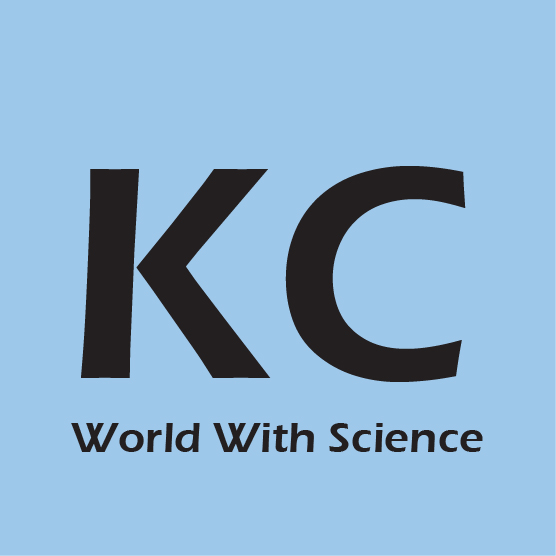Pediatric Health 2023
About Conference
Pediatrics Conferences theme resembles “Leading the way in Child Health with Clinical Pediatrics Research”, and our mission is to achieve advanced mental, physical, social health and wellbeing of our kids around the globe, The Conference will provision the professional needs and interests to work universally, recognize the organizations and individuals that advance the Global theme.
We are currently accepting the proposals for Symposia, workshops and organized contributed sessions, from every Pediatric Health and Nutrition prospect. We welcome you towards the where you can grasp and implement the infinite pediatrics topics, and the most pressing issues of Pediatric Science with your research work to save a child.
With your valuable presence at our Pediatrics conferences, many Younger Pediatrician’s and
Student Delegates will learn new methods to develop their skills by correlating with your research through the Plenary Talks, Keynote Speeches, Poster Sessions, Panel Discussion, and Workshops presented by you and achieve their future goals.
Targeted Audience:
- Specialists in Pediatric medicine
- Students
- Research Scholars
- Pharmaceutical Companies
- Academic Professionals
- Pediatricians
- Neonatologists
Why attend?
Packed with many symposiums, workshops and numerous plenary sessions with main concentration on thought igniting discussions and peer-directed networking, This conference is the ideal site for to absorb about the cutting-edge trends surrounding the Pediatric Health and Nutrition prospects, to gain new skills and insights from successful Pediatric experts were they will be sharing their insights into the part of Pediatric Anesthesia, Pediatric research, Pediatric Neurology, Pediatric Genetics, Pediatric Nursing, Pediatric Cardiology, General Pediatrics, Pediatric Otolaryngology, Pediatric Dentistry, Pediatric Gastroenterology, Neonatology, Environmental Pediatrics, Pediatric ophthalmology, Pediatric urology, Pediatric Nutrition, Pediatric Psychology, Pediatric surgery, Autism/ ADHD/ Anxiety, Pediatric obesity, Pediatric Rheumatology, Congenital Heart Disease (CHD), Pediatric Immunology, Child Nutrition and Development, Pediatric Brain Tumor, Pediatric Neonatal diseases, Pediatric Allergy, Pediatric Rehabilitation Medicine, Pediatrics Vaccines, Pediatric Dermatology, Clinical pediatrics and rendering this hooked on to real life tactics for your profession and business. Connect to us and observe the thriving summit by participating in and give your profession and business access to new prospects from all over the Globe.
Target Audience
World Pediatricians
Associations and Societies
Business Entrepreneurs
Case Managers
Claims/Risk Managers
Clinical Nurse Specialists
Data Management Companies
Hospital Administrators
Hospital General Counsel
Legal Nurse Consultants
Medical Colleges
Neonatal Faculty
Neonatal Nurses/Nurse Practitioners
Neonatal nutritionists
Neonatal researchers
Neonatal specialists
Neonatologists
Nurses
Pediatric Dieticians
Pediatric Faculty
Pediatric Nutritionists
Pediatric Physicians
Pediatricians
Pediatrics specialists
Perinatal Nurses/Nurse Practitioners
Physician Assistants
Researchers
Residents
Software developing companies
Training Institutes
Young researchers
Students
Sessions & Tracks
Track 1: Pediatric Anesthesia
Pediatric Anesthesia has shown a dramatic improvement both in clinical and scientifical disciplines. Such advancements in the Pediatrics anesthesia have resulted in significant reduction in morbidity and mortality in children. Scientific technology has brought about many sophisticated monitoring and improvements in equipment which will support the recognition of physico psychological needs of children which has reduced the incidence of lasting psychological effects after hospitalization.
- Myocardial innervation
- Post thoracotomy care
- Obstructive sleep apnea syndrome
- Central Venous Catheters in Small Infants
- Children and Surgery
Track 2: Pediatric research
The study of pediatrics is decreasing the transience rates of the newborns and the youngsters and moreover to control the scattering of diseases which are Pediatric communicable diseases which will be progressing the strong life form infections-free life to draw out the concerns of adolescents and kids. This can be seen that the improvement of pediatrics is finished by knowing the different pediatric transmissible concern essential subjects which for the most part required for pediatrics Autism
Track 3: Pediatric Neurology
Pediatric nervous system science direct clinical and fundamental science examination into youth neurological issue to all the more likely comprehend the starting points of epilepsy, learning handicaps and other neurological issue; and grow new cures and medications. Researchers are engaged with an assortment of lab and clinical research projects to expand our comprehension of the creating sensory system and pathologic procedures that trigger neurological issue in youngsters. The goal is to advance treatments and decisions for an assortment of obliterating and crippling neurologic issue
- Hyperactivity disorder (ADHD)
- Cerebral palsy
- Medically refractory epilepsy
- Neurological disorders
- Neonatal Neurology
Track 4: Pediatric Genetics
Pediatric Genetics is a wide-ranging of diseases that includes certain types of birth defects, chronic diseases, progressive problems and sensory discrepancies that are inherited from one or both parents. In pediatric genetics, conveys diagnostic amenities and genetic counseling to the child with a risk constructed on genes.
Track 5: Pediatric Nursing
Neonatal Nursing is a division of health care that mostly centers in giving care and support for new-born babies who were born precipitately, or suffering from health problems such as birth defects, diseases, or heart deformities. Several neonatal nurses work in Neonatal Intensive Care Unit (NICU), giving very particular medicinal care to in danger infants. Pediatric Nursing is a restorative care of neonates and youngsters up to adolescence, as a edict in an in-patient hospital or day-clinic. Neonatal nurses are registered nurses who have some expertise in working with these youthful, vulnerable patients
- Cardiac nursing
- Clinical nursing
- Critical care nursing
- Nursing management
- Cancer nursing
- Neurosurgical nursing
- Neonatal Nursing
- Palliative Pediatric Nursing
- Pediatric Emergency Nursing
Track 6: Pediatric Cardiology
Pediatric Cardiology welcomes original manuscripts concerning all aspects of heart disease in infants, children, and adolescents, including embryology, anatomy, physiology and pharmacology, biochemistry, pathology, genetics, radiology, clinical aspects, investigative cardiology, electrophysiology and echocardiography, and cardiac surgery. Many of the pediatric heart defects such as patent ducts arteriosus interruption, vascular ring division, pericardial window, diaphragm placation, thoracic duct ligation, ligation of collateral vessels have been repaired using pediatric interventional cardiology. The barriers and challenges to achieving routinely applicable Tissue Engineered and Regenerative Cardiac Surgery Methods are also explored as is a novel concept for the Cardiac.
- Cardiac Health in Children
- Tetralogy of Fallot
- Atrial Septal Defect (ASD)
- Atrioventricular Canal Defect
- Pulmonary Atresia
- Kawasaki Disease
- Advanced Imaging
- Tetralogy of fallot
- Atrial septal defect (ASD)
- Sports nutrition & fitness
Track 7: General Pediatrics
The study of pediatrics is diminishing the mortality rates of the new-borns and the youngsters and furthermore to control the spreading of diseases which are pediatric infectious diseases and which will be advancing the healthy life form infections-free life to draw out the issues of teenagers and kids. This can be seen that the improvement of pediatrics is ended by knowing the different pediatric hereditary issue essential subjects which for the most part required for pediatrics.
Track 8: Pediatric Otolaryngology
Pediatric otolaryngologists are primarily concerned with medical and surgical treatment of ear, nose, and throat diseases in children. Pediatric otolaryngologists generally provide the following services: Diagnosis and treatment of ear, nose, and throat disorders, and head and neck diseases.
Track 9: Pediatric Dentistry
The specialty of Pediatric Dentistry is the practice, teaching of and research in the complete defending and curative oral care of children from birth to juvenility. Pediatric dental treatment and disease determent is arranged for children up to 14 years of age, with certain facilities for infant and newborns. Services afford enter athletic mouth guard, fillings sealants, fluoride treatment, and space maintainers. Pediatric dentists improve the dental health of children as well as deliver as educational resources for parents. It is approved by the American Academy of Pediatrics (AAP) and American Academy of Pediatric Dentistry (AAPD) and that a dental visit should occur within six months after the existence of the first tooth or by a child's first birthday.
- Endodontics & hypnodontics
- Pediatric dental surgeries
- Dental material sciences
- Pediatric dental research
- Pediatric oral cancer
- Dental trauma
Track 10: Pediatric Gastroenterology
Pediatric Gastroenterology in youngsters runs from minor to dangerous, and short-to long haul or endless. Neonatal Jaundice is a standout amongst the most widely recognized conditions requiring medicinal consideration in infants. Gastrointestinal nourishment sensitivities are not uncommon in newborn children and kids. Gastrointestinal (GI) endoscopic system a pediatric endoscopy has turned into a fundamental methodology for assessment and treatment of GI infections. Complex gastrointestinal surgery is one of the normal strategies to treat GI issue in youngsters. The rule sicknesses worried about pediatric gastroenterology are intense the runs, gastritis, persevering retching and issues with the improvement of the gastric tract.
- Short bowel syndrome
- Celiac disease
- Gastroenteritis
- Inflammatory bowel disease
- Necrotizing entercolitis
Track 11: Neonatology
Neonatology is a subspecialty of pediatrics that involves the medical care of new-born babies, who are sick or require special medical care as a result of prematurity, low birth weight, intrauterine growth retardation, birth defects, sepsis, and pulmonary hypoplasia or birth asphyxias. It is a hospital-based specialty and is generally practiced in care units.
Neonatologists are medicinal specialists who practice in NICU, also called Neonatal Intensive Care Units, which is a hospital department dedicated completely for newborn infants.
Related Topics on Neonatology: Sepsis, Baby Feeding, Community Neonatal education, Fetal and Perinatal therapy, Neonatal Medicine, Neonatal health, Neonatal Resuscitation, Neonatal Nursery Levels
Track 12: Environmental Pediatrics
Pediatric environmental health, also known as environmental pediatrics, is an area that has gained prominence in recent years. Corollary to this understanding is the recognition that pediatricians and others who care for children need to become more knowledgeable about environmental effects on children's health.
Track 13: Pediatric Ophthalmology
Pediatric Ophthalmology refers to the diagnosis and treatment of eye disorders, especially in children. The scope for research in this field is high because the treatment modalities and protocols differ entirely from that of the elderly. The diseases affecting the pediatric vision include Genetic eye diseases, pediatric uveitis, developmental abnormalities and more. There are many genetic diseases that need at most concern during the early stage. Amblyopia is a disease which happens because of the reduced vision in an eye which hasn’t received adequate use during early childhood. The symptoms include tilting the head, poor depth perception and improper movements of the eye
- Retinopathy of prematurity
- Orbital Trauma
- Pediatric Cataract
- Pediatric Glaucoma
- Pediatric Optometry
- Pediatric Vision Care
- Childhood Malignancies
- Congenital Cataract
Track 14: Pediatric Urology
Pediatric urology is a surgical subspecialty of medicine dealing with the disorders of children's genitourinary systems. Pediatric urologists provide care for both boys and girls ranging from birth to early adult age. The most common problems are those involving disorders of urination, reproductive organs and testes. Pediatric urologists treat children with reconstructive problems related to the genitourinary tract
Track 15: Pediatric Nutrition
Pediatric nutrition is the maintenance of a proper well-symmetrical diet consisting of the essential nutrients and the capable caloric intake necessary to promote growth and sustain the physiologic requirements at the various stages of a child's development. Infant nutritional needs vary considerably with age, level of recreation, and environmental conditions and they are directly related to the rate of growth. During the infant stage the need for calories is greater than any postpartum stage due to rapid increase in both height and weight. In general, the average child expands 55% of energy on metabolic maintenance, 25% on activity, 12% growth, and 8% on excretion.
- Nutritional requirements
- Overweight and obesity
- Malnutrition
- Eating disorders
- Food allergies and intolerances
- Nutrition in pregnancy and lactation
Track 16: Pediatric Psychology
Nearly every child or teen faces some challenges as they grow up because of peer pressure, family changes, a death or other loss, managing a chronic illness, or simply because it isn’t easy making the change from being a child to being an adult. Poor mental health can affect overall well-being and can lead to emotional and behavioral changes, ADHD and learning disabilities. Many children experience loss or stress, and others must manage their chronic illness at a young age. Some children have a disorder that runs in the family and puts them at higher risk for depression or anxiety. Some children may also be affected due to school problems and relationship problems and leads to behavioral and developmental disorder Child care and well-being
- Child psychology and child psychiatry
- Adolescent mental health
- Child nutrition and development
- Mental health promotion and educations
Track 17: Pediatric surgery
Pediatric Surgery is a subspecialty of surgery including the surgery of embryos, babies, children, young people, and grown-ups. Pediatric surgery developed in the midst of the twentieth century as the surgical care of birth blemishes required novel strategies and methods and ended up being more regularly based at adolescents' healing facilities. In these sort pediatric surgery particular sorts of novel procedures and methods are most routinely used at children's healing facilities. Sub specialisms of pediatric surgery itself include neonatal surgery and fetal surgery
- Pediatric diseases
- Neonatal surgery
- Fetal surgery
- Vascular surgery
- Oral and maxillofacial surgery
- Colorectal surgery
- Cardio thoracic surgery
- Trauma surgery
Track 18: Autism/ ADHD/ Anxiety
Autism, or autism spectrum disorder (ASD), refers to a broad range of conditions characterized by challenges with social skills, repetitive behaviors, speech and nonverbal communication. According to the Centers for Disease Control, autism affects an estimated 1 in 59 children in the United States today.
Early tests and diagnosis make a huge difference and change in the lives of the children having autism spectrum disorder and their families. As there is no laboratory test for autism disorder, so it is not always easy to make an ASD diagnosis. So, doctors also have to rely on the symptoms and observing the behaviors and listening to the concerns with their family or parents
Track 19: Pediatric obesity
Pediatrics Obesity is a condition where abundance muscle to fat quotients adversely influences a youngster's wellbeing or prosperity. As strategies to choose muscle to fat proportion proportions clearly are troublesome, the determination of weight is regularly in light of BMI. Because of the rising pervasiveness of weight in youngsters and its numerous antagonistic wellbeing impacts it is being perceived as a genuine general wellbeing concern. The term obesity instead of fat is regularly utilized as a part of youngsters as it is less vilifying.
- Eating Disorders
- Type 2 diabetes
- Hypertension
- Hyperlipidemia
- Osteoarthritis
- Prader-Willi syndrome
- Cushing's syndrome
- Hypothyroidism
Track 20: Pediatric Rheumatology
The subject Pediatric Rheumatology takes care of diseases and disorders in children at a variety of joints, muscles, bones. As a Pediatric rheumatologist, need to provide good child healthcare as all the organs undergo development and growth, more chances in the requirement of special medical care. Autoimmune conditions also differ when the immune system sends inflammation to areas of the body when it is not needed causing damage/symptoms. These diseases will also affect the eyes, skin, nervous system, and internal organs.
Track 21: Congenital Heart Disease (CHD)
Congenital heart defect (CHD) is generally called as congenital heart anomaly or congenital heart disease; it is caused due to problem in the structure or abnormal structure of the Heart at the time of birth
Track 22: Pediatric Immunology
Pediatric A child suffering from allergies or other problems with his immune system is referred as pediatric immunology. Child’s immune system fights against infections. If the child has allergies, their immune system wrongly reacts to things that are usually harmless. Pet dander, pollen, dust, mold spores, insect stings, food, and medications are examples of such things. This reaction may cause their body to respond with health problems such as asthma, hay fever, hives, eczema (a rash), or a very severe and unusual reaction called anaphylaxis. Sometimes, if your child’s immune system is not working right, he may suffer from frequent, severe, and/or uncommon infections Immunology
- Pulmonology
- Severe reactions to foods, insect stings, and medications (anaphylaxis)
- Hives (urticaria, welts)
- Eczema (atopic dermatitis)
Track 23: Child Nutrition and Development
For a neonate, mother’s milk is the best nutrition which he can get. Hence, breastfeeding becomes an important part of the diet for the child’s proper growth. Mother’s milk has such nutrition which even the baby food fed as a supplement to mother’s milk cannot provide. Even still breastfeeding is recommended up to 6 months of age. After 6-24 months they must be fed with “complementary food” since after 6 months of age, the milk alone is not sufficient for the child. Malnutrition due to negligence to diet during this period of growth can be very difficult to reverse. Infants and Children by the age of 21 have a growing and changing body. Due to this they nutritional needs keeps changing with their age and development of the body. A pediatric nutritionist looks after the dietary needs of infants as well as adolescents. During the prenatal stage, the growth depends completely on the mother’s nutrition.
Track 24: Pediatric Brain Tumor
Pediatric brain tumors are uncontrolled growths of abnormal cells that occur in a child's brain or the tissue and structures that are adjacent to it. Many diverse types of pediatric brain tumors exist some are noncancerous (benign) and some are cancerous (malignant). Treatment and chance of retrieval (prognosis) depend on the variety of tumor, its position within the brain, whether it has blowout, and your child's age and wide-ranging health. Because new treatments and technological advancements are constantly being developed, numerous options may be available at different points in treatment and diagnosis
- Choroid plexus tumors
- Neurofibroma/plexiform neurofibroma
- Ependymoma and myxopapillary ependymoma
- Primitive neuroectodermal tumors
- Medulloblastoma
- Germ line tumors of the brain
Track 25: Pediatric Neonatal diseases
Many factors are responsible for the development of Neonatal diseases like household air contamination, natural factors and high maternal Body-Mass Index (BMI), which leads to neonatal mortality. Maternal Smoking, overweight amid pregnancy is associated with risk of neonatal infection. Neonates, particularly preterm newborn children are moderately invulnerable traded off with immaturity of the Immune System and with highly developed antibodies leads to increased susceptibility to serious bacterial, viral and fungal infections
- Blood cell disorders
- Miscellaneous multisystem diseases
- Respiratory Syncytial Virus infection
- Neural tube defects
Market Analysis
Market Analysis of Pediatrics:
Major Manufactures, Industry Chain Analysis, gross margin, growth rate and the most effective development within the organization comprised throughout this analysis, additionally to the present. Global Pediatric Healthcare Market Research Report 2023 offers readers comparative assessment of key market players and strategic overview of global Pediatric Healthcare market.
Scope and Importance:
Pediatric Health-2023 will concentrate on how to promote excellence in pediatrics research and child health which offers an exceptional open door for specialists across the globe to meet, organize, and see new logical developments. The current year's Pediatrics Health-2023 features the subject, “Innovations and Excellence in Pediatrics & Research" which mirrors the noteworthy advance in Pediatric Research. The two days meeting Pediatrics Health-2023 incorporates workshops, symposiums and extraordinary keynote sessions directed by famous and prestigious speakers who exceed expectations in the field of Pediatrics. This additionally supports the dynamic interest of youthful understudies, forthcoming analysts and growing researchers as we are facilitating Pediatrics health-2023 Poster Award Competition and Young research Forum at the gathering venue.
Pediatrics Health-2023 is a global stage for exhibiting research about Pediatrics and related themes, trading thoughts regarding it and in this manner, contributes in dispersal of information in administration of the infection for the advantage of the general public.
Pediatrics Market Analysis Globally:
Major Institutions and Hospitals:
Europe: Sant Joan de Déu Hospital Barcelona, Barcelona University, Sant Joan de Déu Research Institute, Hospital Materno-Infantil Vall Hebron, Hospital Ruber Internacional, Centro Médico Teknon, Vithas Xanit International Hospital, Hospital Quirón Marbella, Hospital Quirón Valencia, Grupo Hospitalario Quirónsalud, Master's Degree in Pediatric Infectious Diseases, Autonomous University of Barcelona, University of Navarra, University of Valencia, Complutense University of Madrid, Pompeu Fabra University, University of Granada, University of Salamanca, University of Santiago of Compostela, University of Seville, University of the Basque Country, University of Rovirai Virgili, University of Murcia, University of Zaragoza, Universidad de Alcala.
USA: University of Pennsylvania, Harvard University, University of Cincinnati, Johns Hopkins University, University of California-San Francisco, Stanford University, University of Colorado, Baylor College of Medicine, University of Washington, Duke University, University of Pittsburgh, Washington University in St. Louis, Boston University, Case Western Reserve University, Columbia University, Emory University, George Washington University, Indiana University-Indianapolis, North-western University (Feinberg), Ohio State University, University of California--Los Angeles, University of California-San Diego, University of Michigan-Ann Arbor, Vanderbilt University, Yale University, University of Washington, Children's Research Institute, Texas Children's Hospital (Houston), Cincinnati Children's Hospital Medical Center, Children's Hospital of Philadelphia, Nationwide Children's Hospital (Columbus, Ohio), Riley Hospital for Children, Children's Hospital Boston, Children's Medical Center Dallas, Phoenix Children's Hospital, Akron Children's Hospital, Children's Hospital Central California, Arkansas Children's Hospital, Children's Mercy Hospital & Clinics, Lucile Packard Children's Hospital at Stanford, Miller Children's Hospital, Children's Hospital of Pittsburgh of UPMC, Miami Children's Hospital, Childrens Hospital Los Angeles, Cook Children's Medical Center, The Children's Hospital, Children's National Medical Center, Children's Hospital of Alabama, Rady Children's Hospital San Diego, Primary Children's Medical Center, St. Louis Children's Hospital, Seattle Children's Hospital, Children's Memorial Hospital, Morgan Stanley Children's Hospital of NewYork-Presbyterian, University of South Alabama Children's & Women's Hospital, Children's Hospital & Research Center, Inova Fairfax Hospital for Children
Asia Pacific: Tsinghua University, National University of Singapore, University of Melbourne, Hong Kong University of Science and Technology, Zhengzhou University, Huazhong University of Science and Technology, Jilin University, Shandong University, Central South University, Children's Hospital of Fudan University, Red House Hospital, Beijing New Century International Hospital for Children, The Duchess of Kent Children's Hospital at Sandy Bay, Shanghai Children's Medical Center, Shanghai Children's Hospital, Yuying Children's Hospital, University of Tokyo Hospital, National Center for Child Health and Development, The Royal Children’s Hospital, Princess Margaret Hospital, Sydney Children’s Hospital, The Women and Children’s Hospital, Lady Cilento Children’s Hospital, The Royal Children’s Hospital, Princess Margaret Hospital, Sydney Children’s Hospital, The Women and Children’s Hospital, Lady Cilento Children’s Hospital



















